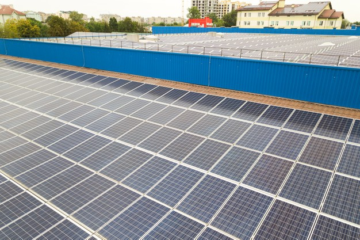By Nitu Goel & Natasha Ambre
Climate change is for real and today the impacts extend well beyond an increase in temperature, affecting ecosystems and communities around the world. Rising sea levels, unpredictable season advances, increasing wildfires can largely be attributed to climate change. The Paris Accord re-emphasis the need to prevent the rise in global temperatures by more than 2 degree Celsius and rather pursue efforts to limit the temperature increase even further to 1.5 degrees Celsius. Significant amount of finance is needed to implement country commitments (Nationally Determined Contributions, NDCs) towards promoting a low-carbon and a climate-resilient economy as per the agreement.
Climate Finance is central to bring about this transformative change and a well-designed financial instrument (one that reduces private investors’ risks and improves financial returns) will play an important role in addressing this challenge. Green Climate Fund, Global Environment Facility and Adaptation Fund have been the major providers of climate finance. In addition, innovative financing structures like Green Bonds have also proved to be an extremely useful instrument to assist transition to a low carbon and a climate resilient development.
Green Bonds are “fixed-income financial instruments”, where the proceeds are specifically earmarked to be used for climate and environmental projects. The World Bank is a major issuer of green bonds and issued first green bond in 2008 which helped formed the basis for International Green Bond Principles coordinated International Capital Markets Association (ICMA). The institution has been very active especially in the United States, where its issuances total over $500 million in U.S. dollars, and in India, over $2.7 billion Indian rupees.[i]
Globally countries like US, China and France have built policy frameworks to promote investments in green bonds. Bonds can play an important role in locking a low carbon development especially in long tenure infrastructure project and 2019 saw many prominent bonds in the mitigation sectors. Owens Corning, a large global conglomerate from America issued a bond worth $450 million for projects related to renewable energy, energy efficiency and waste[ii]. The first-ever certified climate bond was issued for remodelling of shopping centres by a real estate company in Australia. Two bonds worth €750 million were issued by German company E.ON to fund sustainable infrastructure and energy efficiency projects[iii]. Sectors that have seen most impact from green bond are renewable energy followed by transport. Currently renewable energy, energy efficiency and clean transportation projects represent the largest sectors in the Green Bond eligible project portfolio.
Though we have seen that Green Bonds have immense potential to address some of this challenge but only a small share of proceeds is allocated to adaptation. A report by Climate Policy Initiative (CPI) analysed 132 eligible climate finance submissions to the Global Innovation Lab for Climate Finance and found that the submissions were primarily mitigation-focused, with only 28% focusing on adaptation[iv]. Skill gaps among investors with regard to adaptation-focused ideas and lack of data to assist investment decisions were identified as most common barriers to adaptation finance through green bonds.
However Climate Bond Initiative (CBI) does acknowledges the need for adaptation based bonds and has released a set of “Climate Resilience Principles” to address the risk profile and promote a climate-resilient economy. They recognise that infrastructure design and construction today must incorporate the climatic conditions of tomorrow and anticipated impacts. Thus the need to develop adaptation focused bond is indispensable especially for a developing country like India.
India is the 8th largest green bond market and in particular has immense scope to diversify the green bond market beyond renewable energy. To promote Green Bonds, The Securities and Exchange Board of India (SEBI) has endorsed Green Bond Principal and issued Green Bond Guidelines which provides comfort of regulation to an investor. Green bond issuance from India was US$1.95 billion in September quarter of 2017, making it the fifth-largest issuer in terms of size in the world for the quarter. The proceeds of these bonds were allocated to renewable energy projects, low carbon transportation, and to energy efficient projects and green buildings. Prominent players in Indian market who have utilised this instrument include Greenko Energy Holdings, ReNew Power and Adani Green Energy. However adaptation focused bonds still remains an underserved sector.
In summary, green bonds can be an effective tool to manage climate risks and also provide an opportunity to players to get some overseas investors who are at time difficult to get. However the market requires increasing and sustaining investor confidence and aligning it with issuer low-carbon plans. More precise definitions of the types of investments that contribute to sustainability will help to gain investor confidence and further avoid green washing of investments. An increased transparency in form of third party assessment on ‘use of funds’ and ‘alignment with Climate Bond Principles’ will help address this issue. One should also focus on subsidizing certification cost to reduce the cost of issuing certified greed bonds and on devising right fiscal instruments in the form of tax credits etc. to increase bond attractiveness.
The market for Green Bonds is growing but not at the potential that it holds for financing climate resilient and low carbon development. Capacity building of municipal bodies, financial institutions, power producers other important stakeholders along with a framework for green bonds that ensures robust regulatory support and investor push can go a long way in creating this market.


